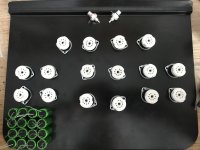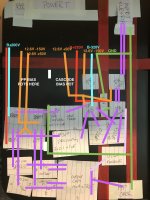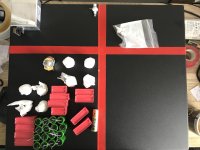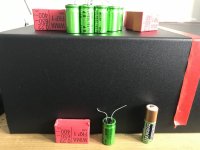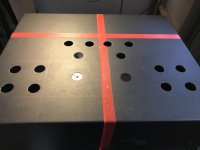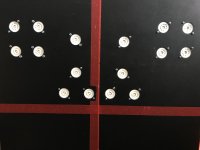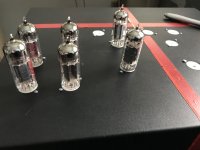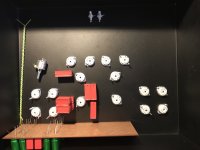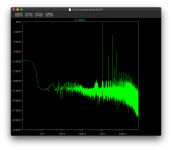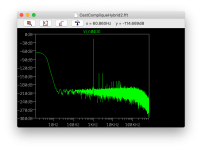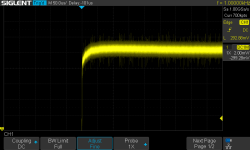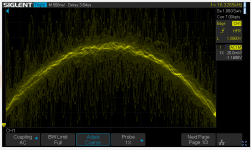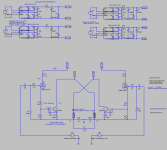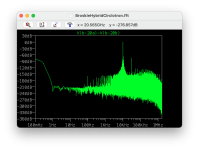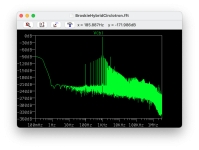There's a noise formula for Boltzman that basically means the more temperature and resistance the more noise is added by the resistors.
This means that even for the best resistors, the lower the resistance and lower the temperature results in lower noise. Although this is a tube amp (it's noisier than a digital system), it doesn't harm to think a little on this.
So I'm looking to:
a) identify high current areas
b) identify high resistances
c) reduce temperatures
d) select resistor types that area inherently low noise
e) don't vary in accuracy too much with temperature
So with this I select metal foil resistors. They have a low noise but cost a little more but aren't like the real low noise metal foil types (£20+ a resistor) that provide the best power handling and lower noise. This is in the region of £0.40 resistor and typically drops to £0.20 when you buy over 10. They also are far far better noise wise than carbon composite and carbon film. They have less inductance than wirewound.
As a basic starting point - exceptions aside - therefore a metal foil resistor, 1W, 500V and 1% tolerance with <50ppm/C will be our starting point. This will be overkill in stability and tolerance but our amp uses higher current tubes hence we need to double down on the power handling.
So in a tube amp the heaviest currents are across the tubes - this includes the anode resistor and the cathode resistor. Here the current is in the region of 20mA to 60mA per tube or 240mA on the rail. This means that if we can reduce the resistance, and increase the power handling (thus physically larger and so lower temp) we can reduce noise that would be added to the signal. In these areas 3W of power handling would be good to reduce noise. The irritation here is parallel resistors with 1W = higher resistance but lower per resistor current thus lower temp rise. So preference is 3W 500-700V resistor but we start seeing a 250ppm/C deviation which is ok for a tube amp but I'd like it under 100ppm/C.
To give you an idea - the cathode 450ohm resistors on the output stage see 1.1W each at max power. So we should be using 3W for this to keep the noise down. Temp variations will then cause variations in the operating point too but if we can minimise the variation that's good.
Compare that to the bias resistors - only 1/4 watt. The grid stopper resistors are really really low wattage. Both of these would be ok with 1W.
The poor input stage cathode resistors - it's modelling at 2.37W! (23mA) which is a little high (20mA should be max). So this will be special in that it should probably have paralleled 3W resistors. An alternative here is to modify the tube CCS stage a little to lower their operating points to reduce the current being allowed through.
This is all moot at the moment given I will need a variable resistor in there (a 5W job) for the tuning. My thinking here is once I have a real word working figure, I will switch out part of the resistance to a metal foil so less resistance at the variable resistor itself.
I also have a hole punch in the mail, that will allow me to cut the tube socket holes in the sheet metal. I have a flat sheet steel oven tray that is about the size I want - this I can use as a template for the prototyping. Then I can move to a case easily by simply putting the holes in and moving the components in one go.
This means that even for the best resistors, the lower the resistance and lower the temperature results in lower noise. Although this is a tube amp (it's noisier than a digital system), it doesn't harm to think a little on this.
So I'm looking to:
a) identify high current areas
b) identify high resistances
c) reduce temperatures
d) select resistor types that area inherently low noise
e) don't vary in accuracy too much with temperature
So with this I select metal foil resistors. They have a low noise but cost a little more but aren't like the real low noise metal foil types (£20+ a resistor) that provide the best power handling and lower noise. This is in the region of £0.40 resistor and typically drops to £0.20 when you buy over 10. They also are far far better noise wise than carbon composite and carbon film. They have less inductance than wirewound.
As a basic starting point - exceptions aside - therefore a metal foil resistor, 1W, 500V and 1% tolerance with <50ppm/C will be our starting point. This will be overkill in stability and tolerance but our amp uses higher current tubes hence we need to double down on the power handling.
So in a tube amp the heaviest currents are across the tubes - this includes the anode resistor and the cathode resistor. Here the current is in the region of 20mA to 60mA per tube or 240mA on the rail. This means that if we can reduce the resistance, and increase the power handling (thus physically larger and so lower temp) we can reduce noise that would be added to the signal. In these areas 3W of power handling would be good to reduce noise. The irritation here is parallel resistors with 1W = higher resistance but lower per resistor current thus lower temp rise. So preference is 3W 500-700V resistor but we start seeing a 250ppm/C deviation which is ok for a tube amp but I'd like it under 100ppm/C.
To give you an idea - the cathode 450ohm resistors on the output stage see 1.1W each at max power. So we should be using 3W for this to keep the noise down. Temp variations will then cause variations in the operating point too but if we can minimise the variation that's good.
Compare that to the bias resistors - only 1/4 watt. The grid stopper resistors are really really low wattage. Both of these would be ok with 1W.
The poor input stage cathode resistors - it's modelling at 2.37W! (23mA) which is a little high (20mA should be max). So this will be special in that it should probably have paralleled 3W resistors. An alternative here is to modify the tube CCS stage a little to lower their operating points to reduce the current being allowed through.
This is all moot at the moment given I will need a variable resistor in there (a 5W job) for the tuning. My thinking here is once I have a real word working figure, I will switch out part of the resistance to a metal foil so less resistance at the variable resistor itself.
I also have a hole punch in the mail, that will allow me to cut the tube socket holes in the sheet metal. I have a flat sheet steel oven tray that is about the size I want - this I can use as a template for the prototyping. Then I can move to a case easily by simply putting the holes in and moving the components in one go.


